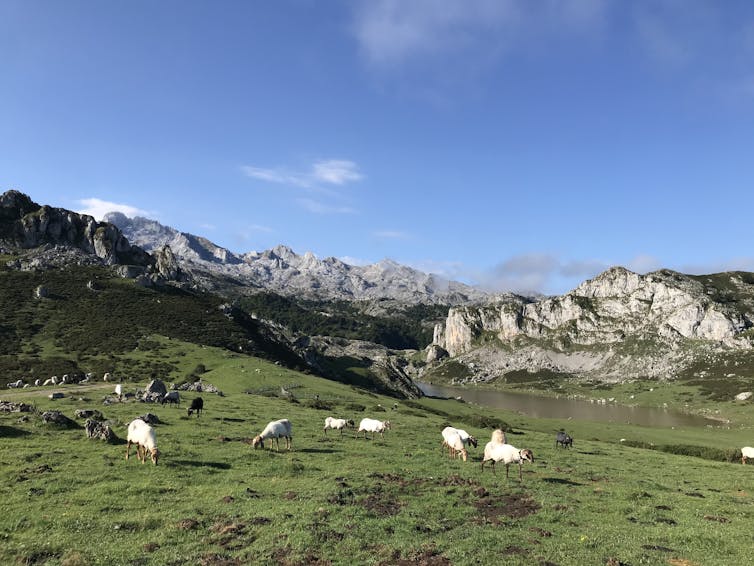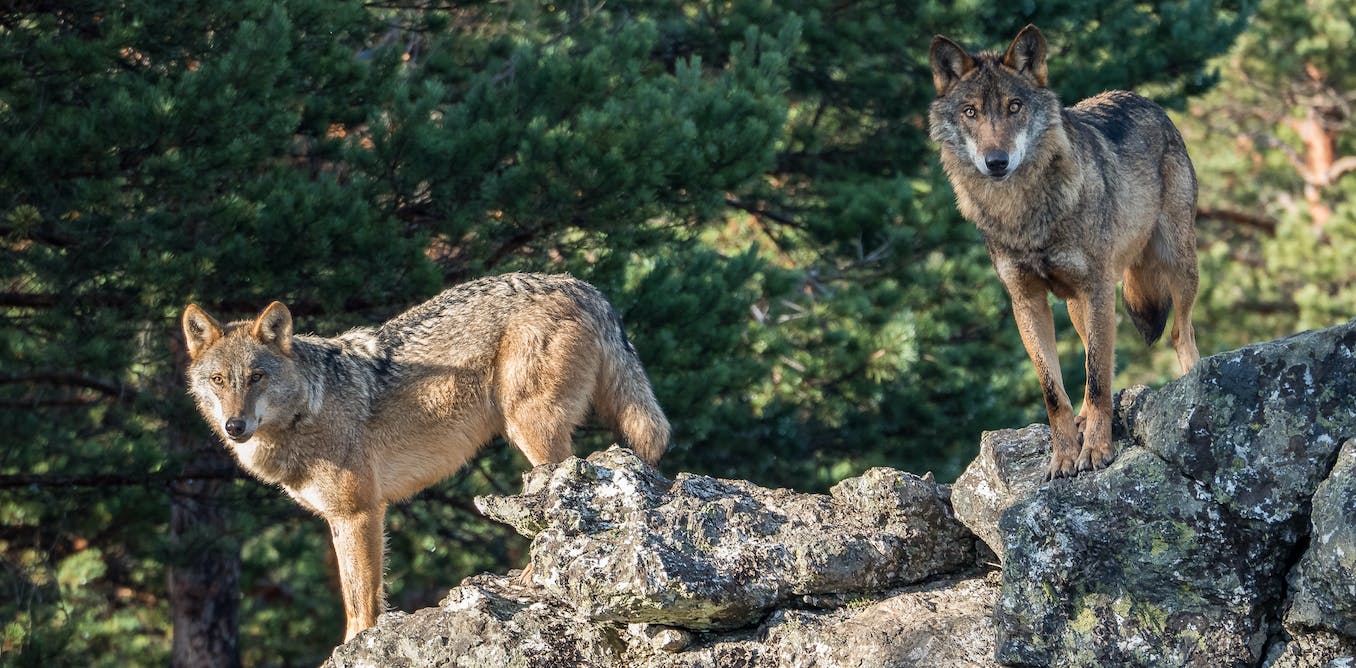Wolves are staging a comeback in many areas of Europe after centuries of persecution. Over the past decade alone, they have expanded their range on the continent by more than 25%.
This resurgence was brought into sharp focus in September 2023 following a controversial statement by Ursula von der Leyen, president of the European Commission. She said: “The concentration of wolf packs in some European regions has become a real danger for livestock and potentially also for humans. I urge local and national authorities to take action where necessary.”
But what is the right action to take? Recent decisions by EU member states do not reflect a consensus on the matter.
The Swiss senate has voted to ease restrictions on culling their roughly 200 wolves to safeguard livestock that roam freely in the Alps. Spain, which is home to more than 2,000 wolves and boasts extensive livestock grazing systems, has adopted a contrasting stance.
In 2021, the Spanish government declared wolves strictly protected. It aims to increase the wolf population by 18% and encourage farmers to implement livestock protection measures like installing fences or keeping guard dogs.
An examination of Spain’s motivations for protection may provide some insight into what motivates countries to adopt such different approaches to coexistence.
Alexandros Michailidis/Shutterstock
What does coexistence mean?
In new research that I carried out with several colleagues, we investigated how people in Spain interpret and experience coexistence with wolves. Our findings revealed three distinct and, to some extent, conflicting views of what coexistence means and how it should be achieved.
Read more:
How to live with large predators – lessons from Spanish wolf country
“Traditionalists” cared deeply about the landscapes, livelihoods and biodiversity that evolved together throughout millennia of free-range pastoralism. They saw people as a part of nature and interpreted coexistence as a state where the wolf was controlled to not disrupt pastoral activities.
“Protectionists” wanted to restore “wild” nature (with minimal human influence) and believed that the wolf would catalyse this process. They saw coexistence as a state where human activities were controlled so that wolves could roam free.
“Pragmatists” were less fixated on a certain type of nature and more on the relationships and context within each location. They regarded coexistence as a state where the needs of different groups (including wolves) were balanced.
Relaxing or increasing wolf protection has come to represent these different visions of the future. Each of these visions offers advantages to some people and wildlife and presents challenges for others. As a result, the topic has become deeply political.
The politics of wolf conservation
In Spain, the proposal to protect wolves was put forward by protectionists, and aligned with the agenda of the incumbent left-wing government. Podemos, one of the left coalition parties, submitted a proposition for strict wolf protection in 2016 (when they were in opposition) in collaboration with pro-wolf advocacy groups.
By contrast, Spain’s right-wing political parties were firmly opposed. These parties tend to target rural voters, for whom the return of carnivores has come to symbolise the demise of pastoral cultures.
The proposal was ultimately endorsed by the government based on wolves’ “scientific, ecological and cultural value” – largely subjective criteria. For instance, one could argue that the fox, which is not protected, possesses similar values. These criteria do not consider how stringent wolf protection measures might affect other cultural or ecological values, like pastoral farming systems.
Spain’s decision was also influenced by the protectionists’ view of the wolf’s conservation status. A species that is classified as having a “favourable” status (adequate to guarantee its long-term survival) in the EU Habitats Directive can, in some instances, be hunted. However, conservationists disagree about the criteria and data on which this status is based.
For example, an assessment submitted to the International Union for Conservation of Nature Red List in 2018 indicates that the Iberian wolf population is large, stable and slowly expanding. By contrast, a report published by a pro-wolf advocacy group in 2017 claimed that more wolves were killed than born in Spain during that year.
The latter has been accused of being biased and unscientific. However, it did not stop the Spanish Environment Ministry from using the report to reclassify the conservation status of wolves from “favourable” (as it was in previous reports) to “unfavourable”. In other words, information was interpreted, selected and presented in a way that justified increased protection.
The Swedish government, which has been led by a right-wing coalition since 2022, seeks to achieve the opposite. It has ordered the Environment Protection Agency to review if the established threshold for favourable status, set to a minimum of 300 in 2019, can be lowered to enable increased culling.

Hanna Pettersson, CC BY-NC-SA
This nature or that nature?
To bridge the political divide between protection and persecution, as well as between the restoration of “wild” versus pastoral landscapes, a reevaluation of how decisions are made and what evidence is considered is needed.
Science plays a crucial role in evaluating various policy options and their consequences, such as the effect of an increased wolf population on sheep or deer behaviour. But it cannot determine the “correct” course of action. That choice depends on what people, livestock and wildlife in a particular place need to live well. In other words: context matters.
In most cases, the question is not a matter of choosing between “this or that”, but rather, how we get “a little bit of everything”. Reconciling different interests and finding a way forward requires public participation and, usually, professional mediation. These are the actions that the European Commission should encourage among member states.
With this in mind, it is concerning that the pragmatic interpretation is largely overlooked in the debate. Ultimately, the sustainable coexistence of humans and wolves does not hinge on whether wolves are hunted or protected, or even on the size of the wolf population. Rather, it hinges on how these decisions are made.

Don’t have time to read about climate change as much as you’d like?
Get a weekly roundup in your inbox instead. Every Wednesday, The Conversation’s environment editor writes Imagine, a short email that goes a little deeper into just one climate issue. Join the 20,000+ readers who’ve subscribed so far.



